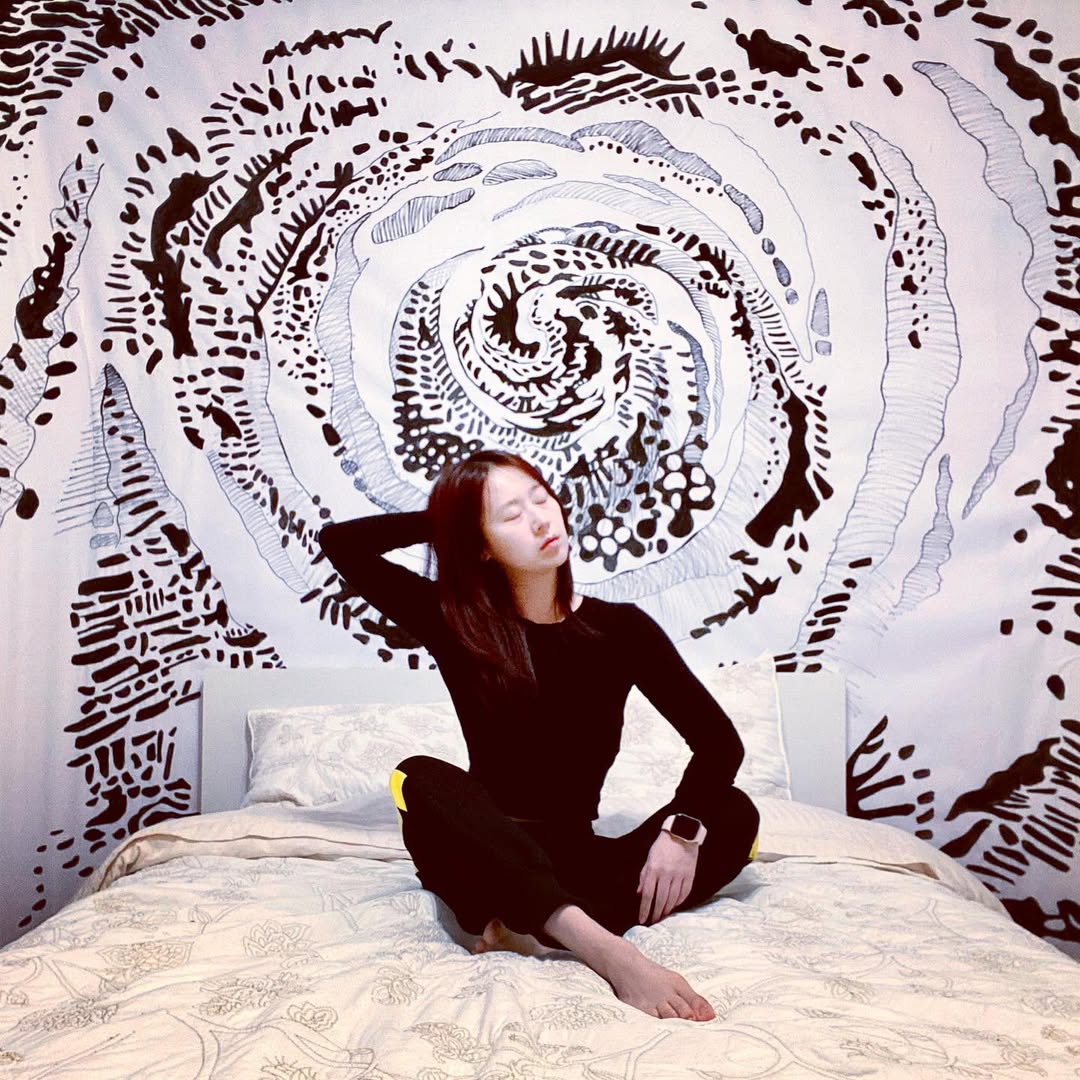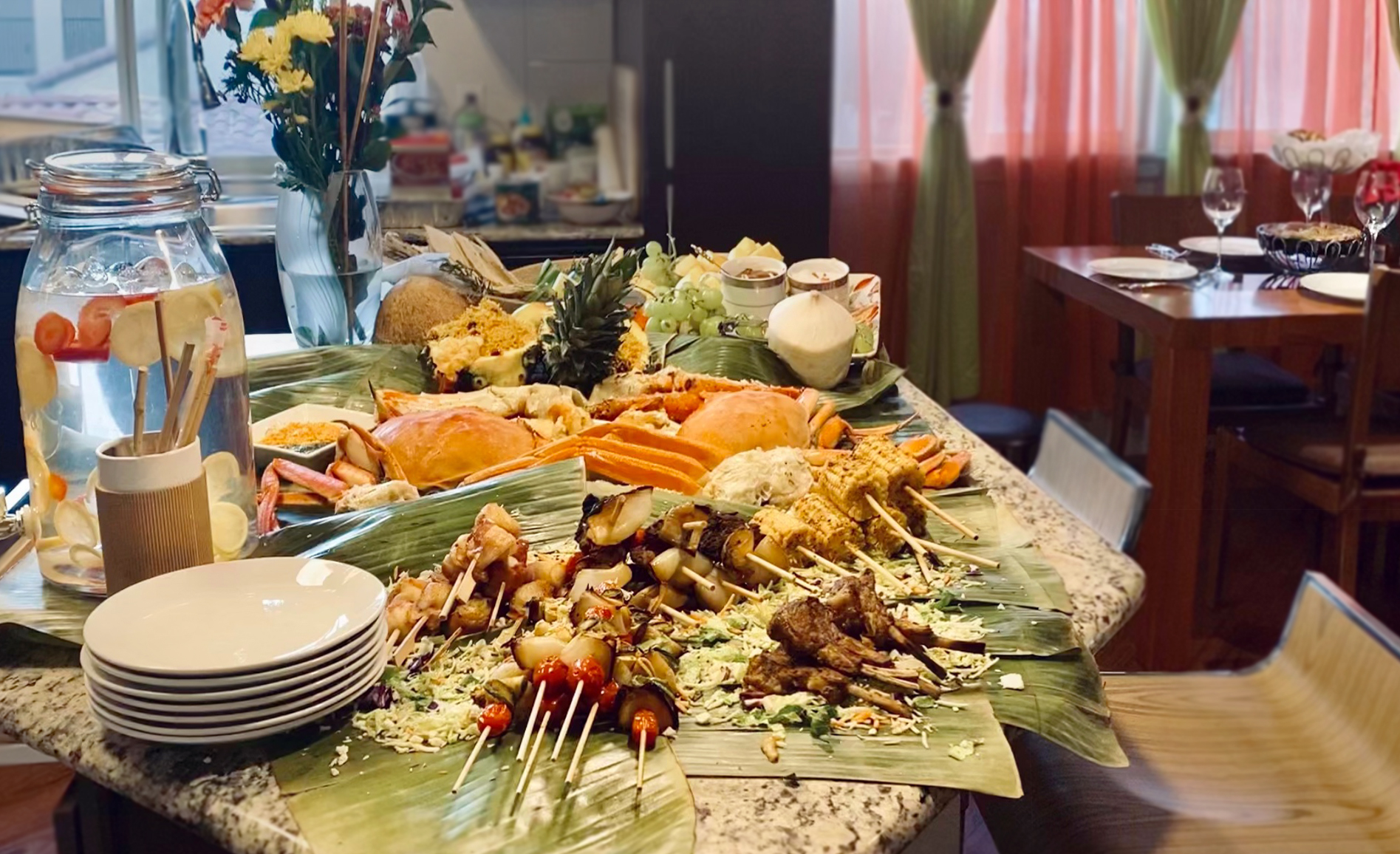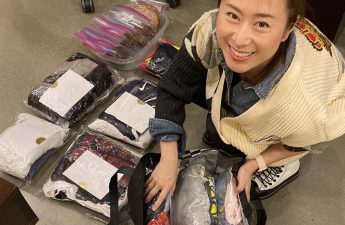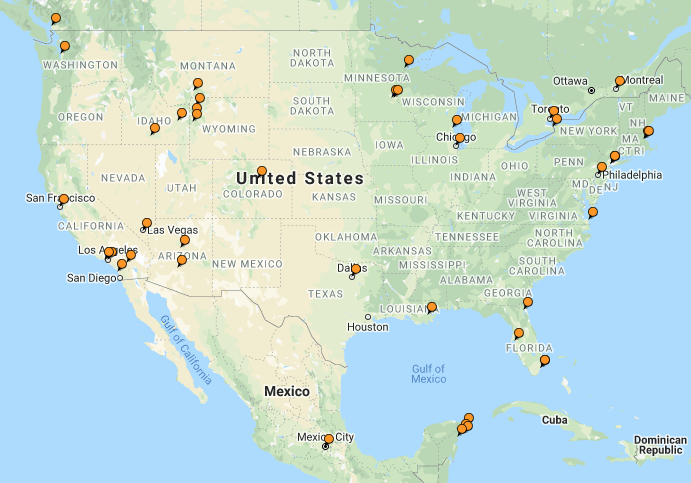The Pasadena sun slouched through the gallery windows, casting long, skeletal shadows across the floor. A city held its breath, suspended in a post-pandemic haze. Four years ago, I’d strolled these same streets, a carefree student, the world my oyster. Now, the city felt like a ghost town, a fragile porcelain doll shattered by an invisible hand.
The gallery, a stark white tomb, beckoned me with an eerie silence. Inside, Oiwa’s paintings shimmered, fever dreams of a world asleep. Distorted figures, landscapes warped by a nightmare, mirrored the chaos within me. A world where waking and dreaming bled into each other, a labyrinth of memories and anxieties.
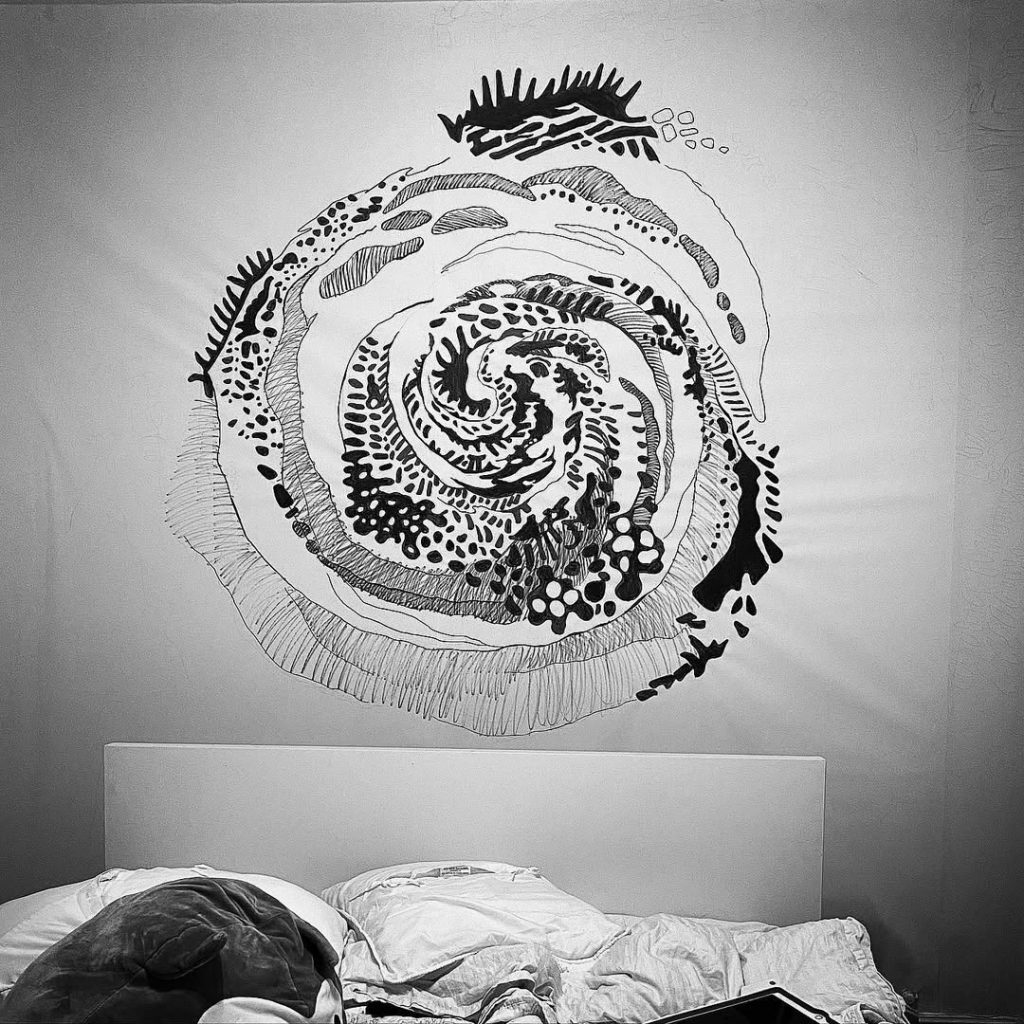
In my rented cell, a vast canvas stared back, a blank void. I began to paint, driven by a desperate need to give form to the formless, to capture the lingering dread of a world forever altered. As a child, I’d dreamt of soaring, unburdened by gravity’s chains. But adolescence had grounded me, tethered me to the earth. Now, I yearned to break free once more, to rise above the chaos.
With each brushstroke, I connected with Oiwa’s slumbering figures, their dreams a reflection of my own. In their shared vulnerability, I found solace. A resilience forged in the fires of adversity, a strength born of shared suffering. We were more than survivors; we were witnesses to a world forever changed. And in that shared witness, a profound connection took root.
